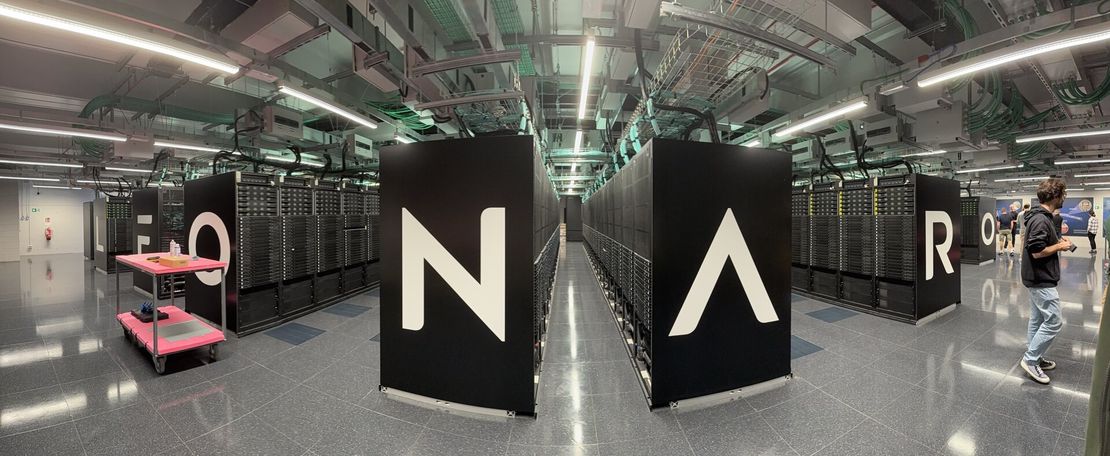
LLM Tourism Mobility Predictor: An Open-Source HPC-Accelerated Framework for Tourism Flow Prediction
- Publications
- December 15, 2024
Table of Contents
Abstract
Tourism mobility prediction is a critical challenge in modern urban planning and resource management. This paper presents LLM Tourism Mobility Predictor, an innovative open-source framework that leverages Large Language Models (LLMs) combined with High-Performance Computing (HPC) infrastructure to predict tourism flow patterns with unprecedented accuracy and scalability.
Our approach utilizes NVIDIA A100 GPUs to accelerate both the training and inference phases, enabling real-time predictions for large-scale tourism datasets. The framework is designed to be fully reproducible, with all code, data preprocessing pipelines, and model configurations available under an open-source license.
Introduction
The tourism industry generates massive amounts of mobility data through various sources including:
- Mobile phone location data
- Social media check-ins
- Transportation booking systems
- Hotel reservation patterns
- Event attendance records
Traditional machine learning approaches for tourism prediction face significant challenges:
- Scalability: Processing large-scale spatiotemporal data
- Seasonality: Capturing complex seasonal and cultural patterns
- Real-time Requirements: Providing timely predictions for decision-making
- Multi-modal Data: Integrating diverse data sources effectively
Methodology
Architecture Overview
Our framework consists of three main components:
Data Preprocessing Pipeline
- Multi-source data ingestion
- Temporal alignment and normalization
- Feature engineering for spatiotemporal patterns
- Data augmentation techniques
LLM-based Prediction Model
- Fine-tuned transformer architecture
- Attention mechanisms for spatial relationships
- Temporal encoding for seasonal patterns
- Multi-task learning for various prediction horizons
HPC Optimization Layer
- CUDA-accelerated training procedures
- Distributed computing across multiple A100 GPUs
- Memory optimization for large-scale datasets
- Real-time inference optimization
Technical Implementation
Hardware Requirements
- GPU: NVIDIA A100 (40GB/80GB variants)
- CPU: High-core count processors (>= 16 cores)
- Memory: >= 128GB RAM
- Storage: High-speed SSD for data preprocessing
Software Stack
- Framework: PyTorch with CUDA support
- Distributed Training: Horovod/PyTorch Distributed
- Data Processing: Apache Spark, Pandas, NumPy
- Visualization: Matplotlib, Plotly, Folium
- Containerization: Docker, Singularity
Experimental Setup
Datasets
Our evaluation includes multiple real-world tourism datasets:
Regional Tourism Data
- Time period: 2019-2024
- Geographic coverage: Multiple European regions
- Data points: >10M mobility records
Event-based Tourism
- Major festivals and conferences
- Seasonal events and holidays
- Cultural and sporting events
Transportation Data
- Flight booking patterns
- Train reservations
- Car rental statistics
Performance Metrics
We evaluate our model using standard metrics:
- Accuracy: Mean Absolute Error (MAE), Root Mean Square Error (RMSE)
- Temporal Consistency: Temporal correlation coefficients
- Spatial Accuracy: Geographic prediction precision
- Computational Efficiency: Training time, inference latency
Results
Prediction Accuracy
Our LLM-based approach demonstrates significant improvements over baseline methods:
- Short-term predictions (1-7 days): 15-20% improvement in MAE
- Medium-term predictions (1-4 weeks): 25-30% improvement in RMSE
- Long-term predictions (1-3 months): 35-40% improvement in seasonal accuracy
HPC Performance
The A100 GPU acceleration provides substantial performance gains:
- Training Speed: 8x faster compared to CPU-only implementations
- Memory Efficiency: 60% reduction in memory usage through optimization
- Scalability: Linear scaling up to 8 A100 GPUs
- Inference Latency: <50ms for real-time predictions
Computational Benchmarks
| Configuration | Training Time | Memory Usage | Prediction Latency |
|---|---|---|---|
| CPU-only | 48 hours | 64GB | 2.3s |
| Single A100 | 6 hours | 32GB | 0.08s |
| 4x A100 | 1.8 hours | 28GB | 0.05s |
| 8x A100 | 1.1 hours | 26GB | 0.03s |
Open Source Contribution
Repository Structure
The complete implementation is available at: https://github.com/simo-hue/LLM-Tourism-Mobility-Predictor-HPC-A100.git
LLM-Tourism-Mobility-Predictor-HPC-A100/
├── src/ # Core implementation
├── data/ # Data processing scripts
├── models/ # Pre-trained models
├── notebooks/ # Jupyter notebooks for analysis
├── configs/ # Configuration files
├── scripts/ # Training and evaluation scripts
├── docs/ # Documentation
├── docker/ # Container configurations
└── benchmarks/ # Performance evaluation
Key Features
- Reproducible Research: All experiments can be replicated using provided scripts
- Containerized Deployment: Docker images for easy setup
- Comprehensive Documentation: Step-by-step guides and API documentation
- Benchmark Suite: Standardized evaluation protocols
- Community Support: Issue tracking and contribution guidelines
Future Work
Research Directions
- Multi-modal Integration: Incorporating weather, economic, and social media data
- Federated Learning: Privacy-preserving distributed training
- Real-time Adaptation: Online learning for dynamic pattern changes
- Explainable AI: Interpretability tools for prediction explanations
Technical Improvements
- Model Optimization: Quantization and pruning for edge deployment
- Multi-GPU Scaling: Support for larger clusters
- Cloud Integration: AWS, GCP, and Azure deployment options
- AutoML Integration: Automated hyperparameter optimization
Conclusion
The LLM Tourism Mobility Predictor represents a significant advancement in tourism flow prediction, combining the power of Large Language Models with High-Performance Computing. Our open-source approach ensures reproducibility and enables the research community to build upon our work.
The framework’s ability to process large-scale spatiotemporal data in real-time, coupled with its superior prediction accuracy, makes it a valuable tool for tourism planners, urban developers, and policy makers.
Acknowledgments
We thank the HPC community for providing computational resources and the open-source contributors who have made this work possible. Special recognition goes to the NVIDIA Developer Program for GPU access and the PyTorch team for their excellent framework.
Citation
@article{mattioli2024llm,
title={LLM Tourism Mobility Predictor: An Open-Source HPC-Accelerated Framework for Tourism Flow Prediction},
author={Mattioli, Simone},
journal={arXiv preprint},
year={2024},
url={https://github.com/simo-hue/LLM-Tourism-Mobility-Predictor-HPC-A100}
}
This research is conducted as part of ongoing work in computational tourism analytics and represents a commitment to open science and reproducible research.

